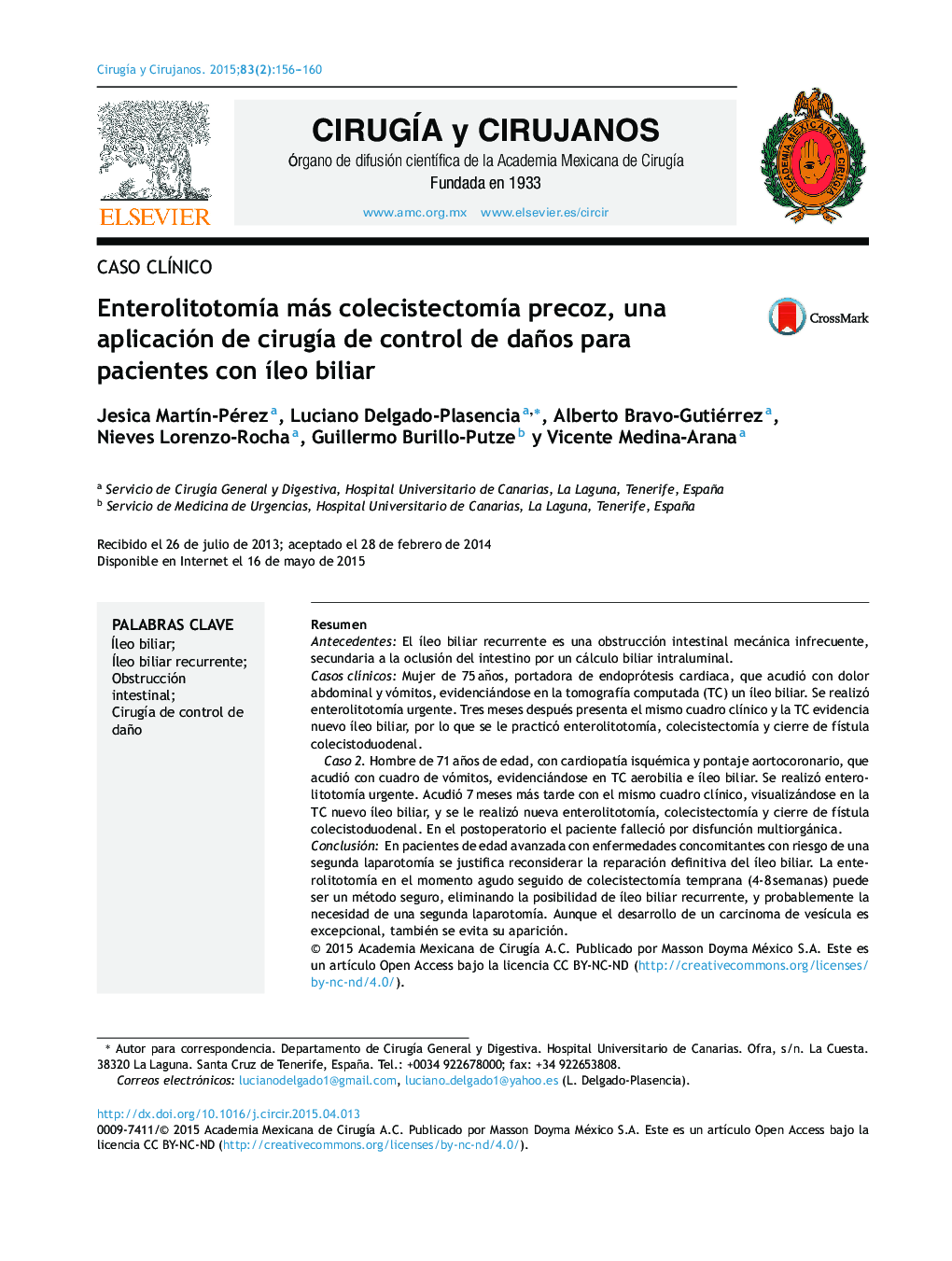| کد مقاله | کد نشریه | سال انتشار | مقاله انگلیسی | نسخه تمام متن |
|---|---|---|---|---|
| 4283304 | 1286879 | 2015 | 5 صفحه PDF | دانلود رایگان |

ResumenAntecedentesEl íleo biliar recurrente es una obstrucción intestinal mecánica infrecuente, secundaria a la oclusión del intestino por un cálculo biliar intraluminal.Casos clínicosMujer de 75 años, portadora de endoprótesis cardiaca, que acudió con dolor abdominal y vómitos, evidenciándose en la tomografía computada (TC) un íleo biliar. Se realizó enterolitotomía urgente. Tres meses después presenta el mismo cuadro clínico y la TC evidencia nuevo íleo biliar, por lo que se le practicó enterolitotomía, colecistectomía y cierre de fístula colecistoduodenal.Caso 2. Hombre de 71 años de edad, con cardiopatía isquémica y pontaje aortocoronario, que acudió con cuadro de vómitos, evidenciándose en TC aerobilia e íleo biliar. Se realizó enterolitotomía urgente. Acudió 7 meses más tarde con el mismo cuadro clínico, visualizándose en la TC nuevo íleo biliar, y se le realizó nueva enterolitotomía, colecistectomía y cierre de fístula colecistoduodenal. En el postoperatorio el paciente falleció por disfunción multiorgánica.ConclusiónEn pacientes de edad avanzada con enfermedades concomitantes con riesgo de una segunda laparotomía se justifica reconsiderar la reparación definitiva del íleo biliar. La enterolitotomía en el momento agudo seguido de colecistectomía temprana (4-8 semanas) puede ser un método seguro, eliminando la posibilidad de íleo biliar recurrente, y probablemente la necesidad de una segunda laparotomía. Aunque el desarrollo de un carcinoma de vesícula es excepcional, también se evita su aparición.
BackgroundRecurrent gallstone ileus is an uncommon mechanical intestinal obstruction secondary to occlusion of the intestine by an intraluminal biliary calculus.Clinical caseFemale, 75 years old, ischaemic heart disease (stent), arrived in our department complaining of abdominal pain and vomiting. Computed tomography showed gallstone ileus. The patient underwent an enterotomy with gallstone removal. Three months later, the patient came back with the same clinical symptoms and signs. A new computed tomography highlighted a gallstone ileus again. Enterolithotomy and gallstone removal, cholecystectomy and closure of cholecystoduodenal fistula were performed. The patient had a prolonged hospital stay due to the development of congestive heart failure.Case 2. Male, 71 years old, ischaemic heart disease and aortocoronary bypass, seen in our department complaining of vomiting. Computed tomography showed aerobilia and gallstone ileus. The patient underwent an urgent enterolithotomy. Seven months later, the patient came back with the same clinical symptoms and signs. Computed tomography showed a new gallstone ileus. An enterotomy and gallstone removal, cholecystectomy and closure of cholecystoduodenal fistula were performed. The patient died due to multi-organ failure in post-surgery period.ConclusionIn the elderly patients with concomitant medical illnesses with the risk of a second laparotomy, it is justifiable to reconsider the definitive repair in the treatment of gallstone ileus. The enterolithotomy in acute phase followed by early cholecystectomy (4-8 weeks) may be a safe method for eliminating, not only the possibility of recurrent gallstone ileus, and probably the need for a second laparotomy, but also the exceptional possibility of developing a gallbladder carcinoma.
Journal: Cirugía y Cirujanos - Volume 83, Issue 2, March–April 2015, Pages 156–160